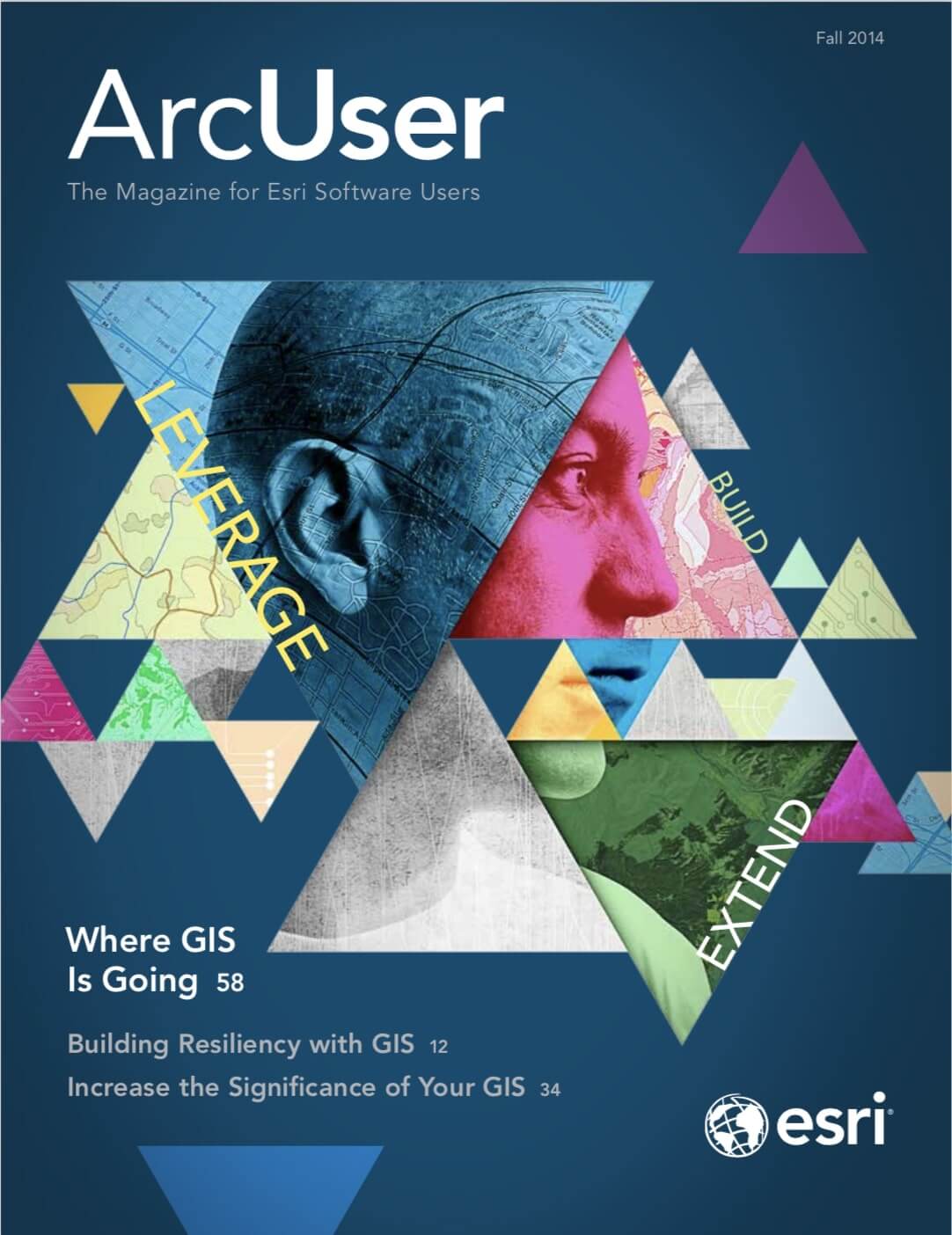ArcGIS Pro was the biggest news at the 3D Mapping Forum held July 12–13, 2014, in San Diego, California, in conjuntion with the Esri User Conference. Esri’s new simplified GIS will have CityEngine procedural capabilities baked into ArcGIS Pro. Keynote speaker Nathan Shephard demonstrated the fluidity of ArcGIS Pro’s semiautomated design workflow and showed how easy it is to build 3D urban environments from 2D data using familiar tools in the ArcGIS Pro ribbon interface.
Forum sponsor and Esri partner Leica Geosystems demonstrated the huge advances in mobile mapping that have improved the creation of street-level imagery records. When Leica’s lidar- and imagery-based mobile mapping system Pegasus:One was introduced at last year’s forum, the audience was blown away by a mobile sensor package that could capture the built environment in great detail relatively cheaply. At this year’s forum Plenary Session, Leica’s Brad Adams introduced its vastly superior sequel, Pegasus:Two. Pegasus:Two calibrates imagery and lidar point cloud data and includes semiautomated feature extraction for near real-time processing and upload into ArcGIS.
The forum’s most inspiring story came from Jan Halatsch of Esri partner SmarterBetterCities’s and Eiko Kumakura of Tokyo Metropolitan University. Their presentation was on their project to rebuild parts of Japan following the 2011 Tohoku earthquake and tsunami. The project combined ArcGIS Online 2D maps, CityEngine procedural design, and SmarterBetterCities’s CloudCities interactive 3D viewer to guide reconstruction.
Survivors of the disaster from the stricken regions of Ainokama, Fujisone, Ninokura, Hasegama, Kabasaki, and Niihama wanted to re-create destroyed villages in their predisaster state to honor the victims and assist in relocation efforts. Because information on those villages was not available, Halatsch and Kumakura, in collaboration with Akinobu Murakami from the University of Tsukuba and Mikiko Ishikawa from Chuo University, conducted workshops with surviving residents. Through these workshops, they learned about the landscapes, housing styles, and culture prior to the earthquake. They incorporated the feedback from those workshops in a detailed reconstruction of the six stricken villages in CityEngine. Using these models, SmarterBetterCities created 3D scenes of the six villages in CloudCities, enabling sharing and discussion of 3D design scenarios between all stakeholders, including residents. The viewer displays 2D ArcGIS Online maps next to the 3D scene for convenient comparison.
CloudCities, powered by Esri CityEngine, became an invaluable resource for planning and reconstruction, helping affected communities honor fallen residents and preserve Tohoku regional culture.

